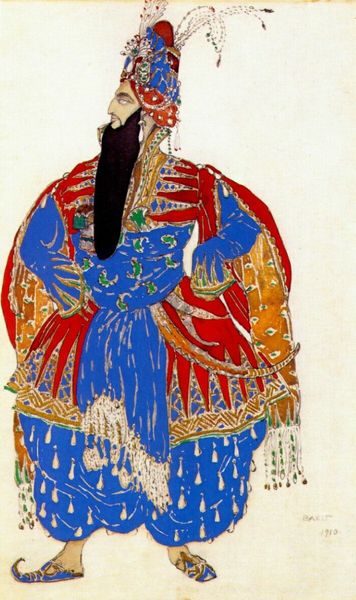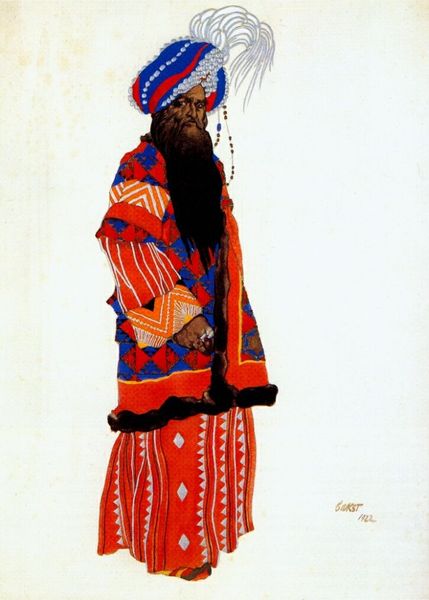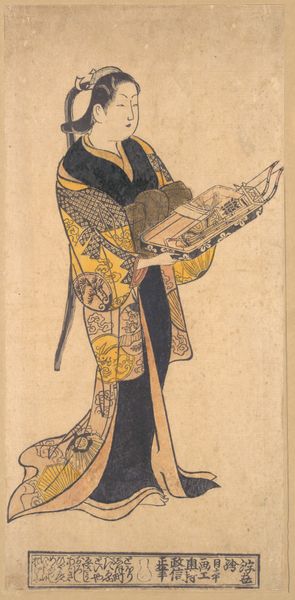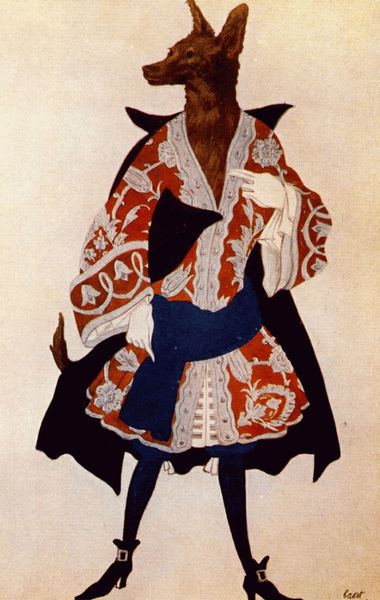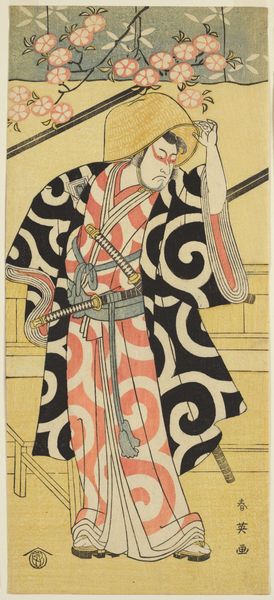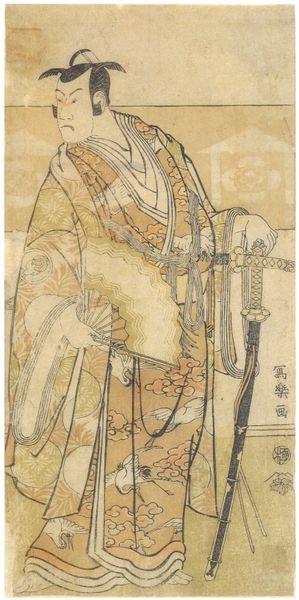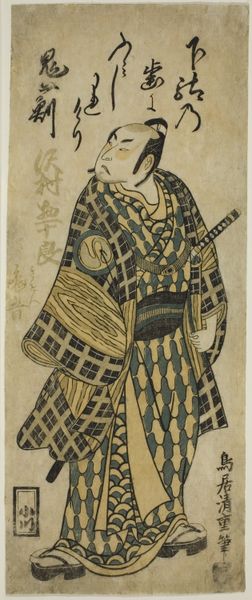
Costume design for The Master of Ceremonies, from Sleeping Beauty 1921
0:00
0:00
leonbakst
Private Collection
drawing, watercolor
#
drawing
#
fantasy art
#
watercolor
#
costume
#
watercolour illustration
Copyright: Public domain
Editor: This is Léon Bakst’s costume design for The Master of Ceremonies in the ballet Sleeping Beauty, made in 1921 using drawing and watercolor. It's just stunning! I'm really drawn to the richness of the textures and the way the character exudes authority, even in a drawing. What strikes you when you look at this design? Curator: The overt display of wealth and power interests me here. Costume design is never neutral; it speaks volumes about the characters, and, crucially, the social hierarchies that define their world. Look at the sheer volume of the Master's wig and robes. Consider the layers of fabric, the opulent floral pattern, even the visible garter on his leg. This isn’t just decoration. Editor: It does seem very deliberate. Curator: Exactly. Bakst, designing for Diaghilev’s Ballets Russes, was acutely aware of the loaded symbolism of clothing. We see this figure enacting a highly stylized performance of power. But let's consider the historical context: the 1920s, in the aftermath of World War I. What kind of statement might Bakst be making about authority in this turbulent time? Editor: Hmm, I guess dressing someone up as outrageously wealthy isn’t necessarily apolitical. Maybe it is supposed to make people question such shows of power? Curator: Precisely. Perhaps the excess points to the absurdity of entrenched systems. Think about how gender, class, and status are all interwoven into what this man embodies. And does this "master of ceremonies" enable and encourage celebration, or silence dissent and uphold a certain worldview? How does this single character work to establish those power dynamics onstage? Editor: I hadn’t thought about costume design as a commentary on power itself. It's more than just aesthetics. Curator: Indeed. By examining the construction of these stage personas, we reveal critical insights into the world – and the power structures – they inhabit. Editor: I definitely have a lot more to consider about what's “beneath the surface” of even an aesthetic rendering of fabric and decoration. Curator: As do I. It’s always rewarding to think about these costume designs in terms of their ability to reveal cultural histories and social commentaries.
Comments
No comments
Be the first to comment and join the conversation on the ultimate creative platform.

